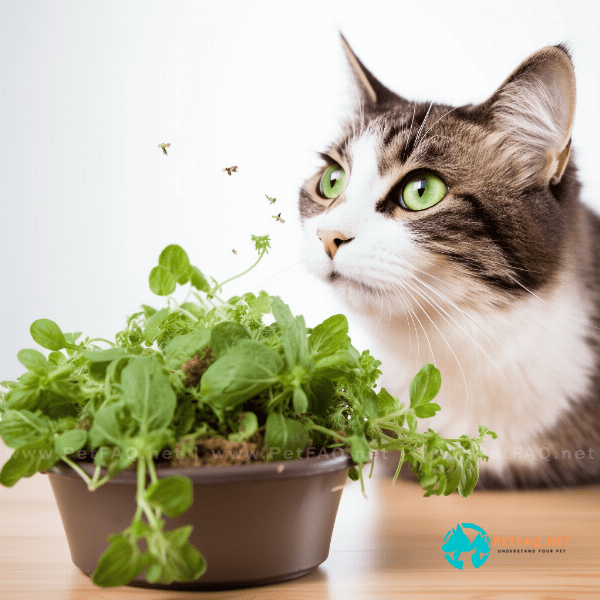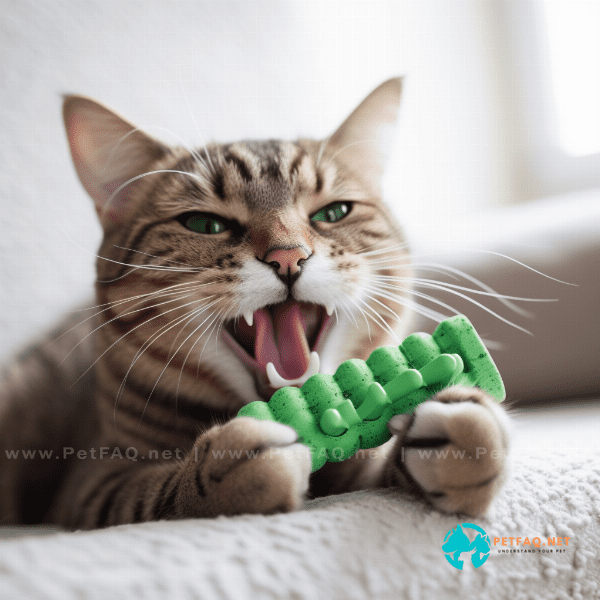Table of Contents
- What is Catnip and How Does It Work on Cats?
- The Surprising Benefits of Catnip for Your Cat’s Health and Wellness
- Understanding the Science Behind Catnip’s Effects on Felines
- The Best Ways to Introduce Catnip to Your Cat
- Common Misconceptions About Catnip and Cats
- The Different Types of Catnip and Which Ones Are Best for Your Cat
- Precautions and Safety Measures When Using Catnip for Your Cat
- Fun and Creative Ways to Incorporate Catnip into Your Cat’s Playtime
- Catnip and Training: Can Catnip Help You Train Your Cat?
- Conclusion: The Benefits of Catnip for Your Cat’s Happiness and Well-being.
What is Catnip and How Does It Work on Cats?
Catnip, also known as Nepeta cataria, is a herb that belongs to the mint family. It contains a chemical compound called nepetalactone, which is what makes it so attractive to cats. When cats smell or ingest catnip, it can cause a variety of behavioral changes that are often referred to as the “catnip effect”.
How Does Catnip Affect Cats?
The effects of Catnip on cats can vary from feline to feline. Some cats may become more active and playful, while others may become more relaxed and sedate. The catnip effect typically lasts for about 10-15 minutes, after which the cat will usually lose interest in the herb for at least an hour or two.
One of the main ways that catnip affects cats is by stimulating their olfactory senses. When cats smell catnip, the nepetalactone in the herb binds to receptors in the cat’s nose, which sends signals to the brain. These signals can trigger a wide range of behavioral changes, including increased playfulness, hyperactivity, and even aggression in some cases.
What are the Benefits of Catnip for Cats?
Catnip can provide several benefits for your feline friend. Firstly, it can be a great source of entertainment and mental stimulation for cats. Playing with catnip toys or simply sniffing the herb can help keep your cat engaged and active, which can prevent boredom and reduce the risk of destructive behavior.
Another benefit of catnip is its potential calming effects. While some cats may become more excitable after consuming catnip, others may become more relaxed and sedate. This can be especially helpful for cats that are anxious or stressed, as catnip can help promote feelings of calm and well-being.
Additionally, some experts suggest that catnip may have health benefits for cats. For example, catnip may have anti-inflammatory properties, which could help alleviate pain and inflammation in cats with conditions like arthritis.
In conclusion, catnip is a natural herb that can provide numerous benefits for cats. Whether you’re looking to keep your cat entertained, promote relaxation, or alleviate pain and inflammation, catnip is a safe and effective option to consider.
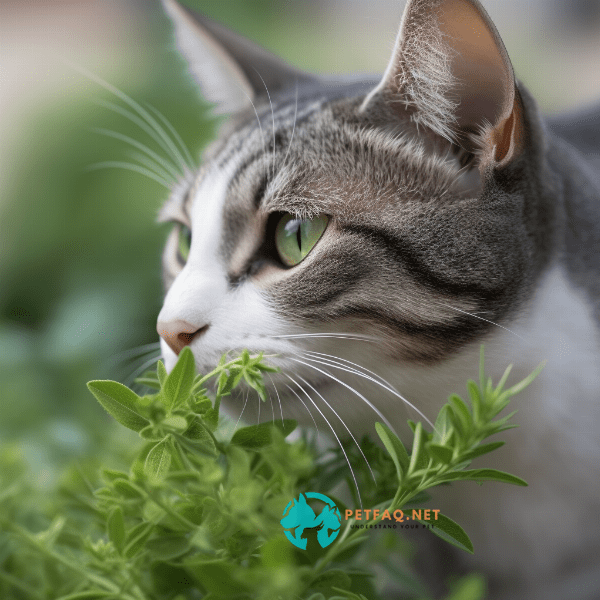
The Surprising Benefits of Catnip for Your Cat’s Health and Wellness
Beyond its entertainment value, catnip can also provide surprising benefits for your cat’s health and wellness.
Catnip as a Stress-Reliever
One of the most significant Benefits of catnip is its potential to relieve stress in cats. Many cats can experience stress and anxiety, which can have a negative impact on their physical and emotional health. When cats consume catnip, it can help them to feel more relaxed and at ease. This can be particularly helpful for cats that struggle with separation anxiety or other stressful situations.
Catnip as a Digestive Aid
Another surprising benefit of catnip is its potential as a digestive aid for cats. If your cat is experiencing digestive issues such as constipation, diarrhea, or vomiting, catnip can help to soothe their digestive system. The herb can also help to stimulate your cat’s appetite, which can be beneficial for cats that have lost their appetite due to illness or other health issues.
Catnip as a Pain Reliever
Catnip may also have pain-relieving properties for cats. The herb contains compounds that can help to reduce inflammation and alleviate pain. This can be particularly helpful for cats that suffer from chronic pain or conditions such as arthritis.
In addition to these benefits, catnip can also provide a natural source of vitamins and minerals for your cat. The herb is rich in vitamin C, calcium, and other essential nutrients that can help to support your cat’s overall health and well-being.
Overall, the benefits of catnip for your cat’s health and wellness are numerous and surprising. From stress relief to digestive support and pain relief, catnip is a safe and effective way to help improve your cat’s quality of life.
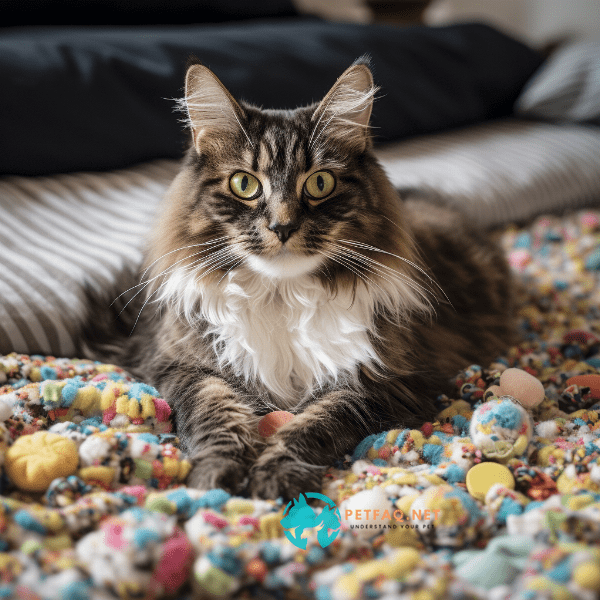
Understanding the Science Behind Catnip’s Effects on Felines
Catnip has been a subject of scientific inquiry for many years, and researchers have made significant progress in understanding the herb’s effects on felines.
The Genetics of Catnip Sensitivity
Not all cats are sensitive to catnip, and researchers have identified a genetic basis for this variability. A gene called the “catnip response locus” (CNRL) has been identified, which is responsible for the sensitivity to nepetalactone. Cats that have a functional CNRL gene are more likely to be sensitive to catnip than those that have a non-functional gene.
The Benefits of Catnip for Wild Cats
While many of us associate catnip with domesticated house cats, the herb actually has a role to play in the lives of wild cats as well. Some researchers believe that wild cats may use catnip as a form of insect repellent, as the nepetalactone in the herb can repel mosquitoes and other pests. Additionally, the effects of catnip on wild cats may help to stimulate activity and playfulness, which can be important for hunting and survival.
In conclusion, the science behind catnip’s effects on felines is complex and fascinating. From the role of nepetalactone in triggering behavioral changes, to the genetic basis for catnip sensitivity, to the potential benefits for wild cats, researchers continue to uncover new insights into this beloved herb.
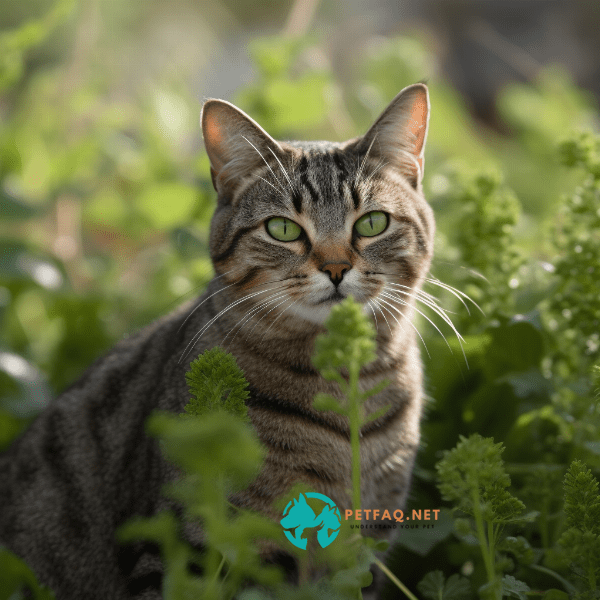
The Best Ways to Introduce Catnip to Your Cat
If you’re interested in introducing catnip to your cat, there are a few things you should keep in mind to ensure a positive and enjoyable experience for both you and your feline friend.
Start with Fresh Catnip
When introducing catnip to your cat, it’s important to use fresh, high-quality catnip. Catnip loses its potency over time, so if you’re using old or stale catnip, your cat may not experience the full benefits of the herb.
Offer Catnip in a Safe Space
When introducing catnip to your cat, it’s important to do so in a safe and controlled environment. Choose a space where your cat feels comfortable and secure, and where they won’t be disturbed by other pets or people.
Try Different Forms of Catnip
Catnip comes in a variety of forms, including dried leaves, fresh leaves, and catnip-infused toys. Experiment with different forms of catnip to see which ones your cat prefers. Some cats may prefer the scent of fresh catnip, while others may enjoy playing with catnip-infused toys.
Incorporate Catnip into Playtime
Catnip can be a great way to add some extra excitement to your cat’s playtime. Try incorporating catnip into your cat’s play routine by offering catnip-infused toys or scattering fresh catnip leaves around your cat’s play area.
In conclusion, introducing catnip to your cat can be a fun and rewarding experience for both you and your feline friend. By using fresh catnip in moderation, offering it in a safe space, trying different forms, and incorporating it into playtime, you can help your cat enjoy all of the benefits that catnip has to offer.
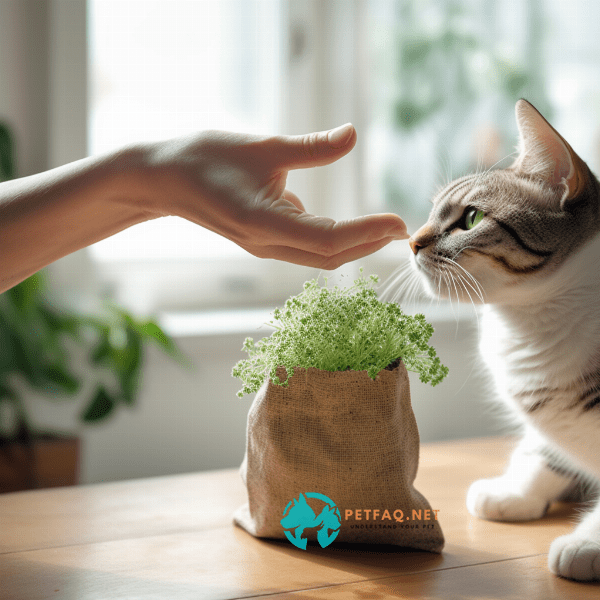
Common Misconceptions About Catnip and Cats
Despite its popularity among cat owners, there are several misconceptions about catnip and its effects on felines. Here are some of the most common misconceptions and the facts that debunk them.
Misconception: Catnip is Addictive for Cats
One common misconception about catnip is that it is addictive for cats. While it’s true that some cats may become very attached to the herb and seek it out repeatedly, there is no evidence to suggest that catnip is addictive or harmful to cats.
Misconception: All Cats are Sensitive to Catnip
Another common misconception is that all cats are sensitive to catnip. In reality, only around 70-80% of cats are genetically predisposed to respond to catnip. For the cats that do respond to catnip, the effects can vary widely in intensity and duration.
Misconception: Catnip is a Psychoactive Drug for Cats
Some people believe that catnip is a psychoactive drug for cats, similar to marijuana for humans. While catnip can cause behavioral changes in cats, it is not psychoactive and does not produce a “high” or altered state of consciousness in the way that drugs do for humans.
Misconception: Catnip is Only for Young Cats
Another common misconception about catnip is that it is only suitable for young cats. In reality, cats of all ages can enjoy the benefits of catnip. In fact, older cats may benefit even more from catnip than younger cats, as it can help to stimulate their senses and keep them active and engaged.
Misconception: Catnip is the Only Herb that Cats Like
While catnip is certainly a popular herb among cats, it’s not the only herb that felines enjoy. Other herbs such as valerian root, silver vine, and honeysuckle can also be appealing to cats and provide similar benefits to catnip.
In conclusion, there are several common misconceptions about catnip and its effects on cats. By understanding the facts and debunking these myths, cat owners can ensure that their feline friends can enjoy all of the benefits that catnip has to offer without any unnecessary worry or confusion.
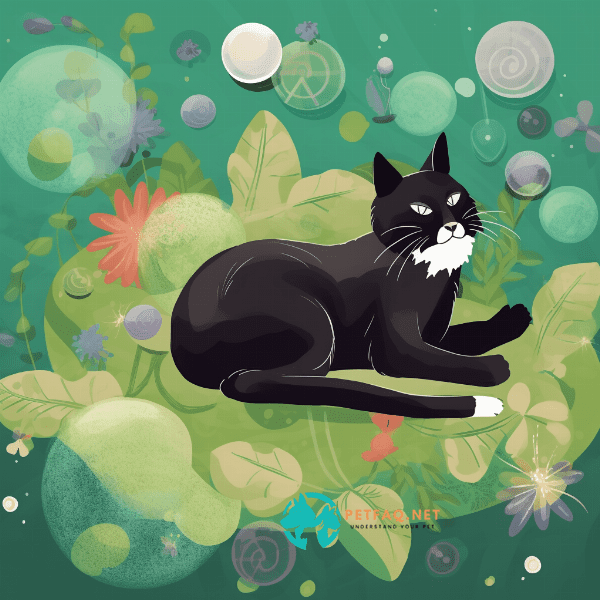
The Different Types of Catnip and Which Ones Are Best for Your Cat
When it comes to catnip, there are several different types available on the market. Each type has its own unique characteristics and benefits. Here’s a look at some of the most common types of catnip and which ones may be best for your cat.
Dried Catnip
Dried catnip is the most common type of catnip available. It is made from dried leaves and flowers of the catnip plant and can be purchased in either loose leaf form or as a pre-packaged toy. Dried catnip can be very potent and can provide a strong and long-lasting effect for your cat.
Fresh Catnip
Fresh catnip is another popular option for cat owners. It is made from fresh leaves and flowers of the catnip plant and is often preferred by cats over dried catnip. Fresh catnip can be purchased at some pet stores or grown at home if you have access to the plant.
Catnip Spray
Catnip spray is a liquid form of catnip that can be sprayed on your cat’s toys, scratching post, or other objects. It is often less potent than dried or fresh catnip but can be a good option for cats that are sensitive to the herb.
Catnip Toys
Catnip toys are another option for cat owners looking to provide their feline friends with the benefits of catnip. These toys are often stuffed with dried catnip or infused with catnip oil and can provide hours of entertainment for your cat.
Which Type of Catnip is Best for Your Cat?
The best type of catnip for your cat will depend on their individual preferences and sensitivities. Some cats may prefer the scent of fresh catnip, while others may enjoy the potency of dried catnip. If your cat is sensitive to the herb, a less potent option such as catnip spray or catnip-infused toys may be a better choice.
In conclusion, there are several different types of catnip available on the market, each with its own unique characteristics and benefits. By experimenting with different types of catnip and observing your cat’s reactions, you can find the best option to provide your feline friend with all of the benefits that catnip has to offer.
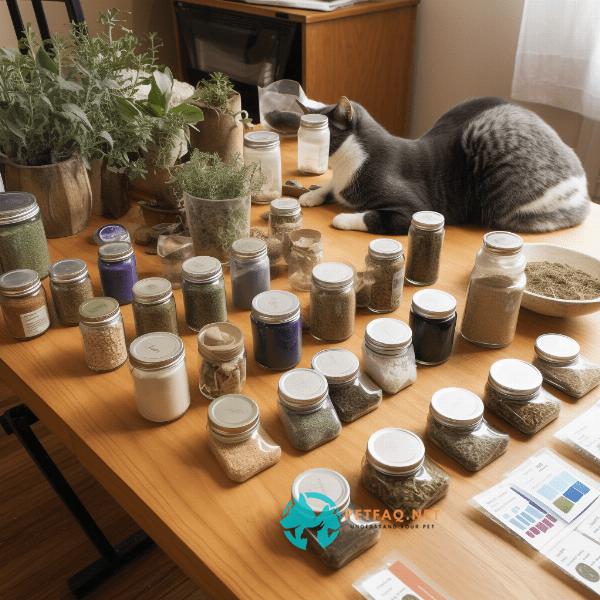
Precautions and Safety Measures When Using Catnip for Your Cat
While catnip can provide numerous benefits for your cat, it’s important to take precautions and follow safety measures to ensure a positive and safe experience for your feline friend.
Monitor Your Cat’s Reaction
When introducing catnip to your cat, it’s important to closely monitor their reaction. Some cats may become very excited and hyperactive, while others may become more relaxed and sleepy. If your cat seems to be having a negative reaction to catnip, such as vomiting or diarrhea, stop using it immediately and consult your veterinarian.
Store Catnip Safely
If you have other pets in your household, it’s important to store catnip safely to avoid accidental ingestion by other animals. Keep catnip in a sealed container in a secure location where other animals cannot access it.
Choose High-Quality Catnip
When purchasing catnip, choose a high-quality brand that is free from additives and pesticides. Look for organic options when possible to ensure that your cat is not exposed to harmful chemicals.
Consult Your Veterinarian
If you have any concerns about using catnip for your cat, or if your cat has a pre-existing medical condition, it’s important to consult your veterinarian before introducing catnip. Your veterinarian can provide guidance on the best ways to use catnip safely and effectively for your feline friend.
In conclusion, while catnip can provide numerous benefits for your cat, it’s important to take precautions and follow safety measures to ensure a positive and safe experience. By using catnip in moderation, monitoring your cat’s reaction, storing it safely, choosing high-quality options, and consulting your veterinarian, you can help ensure that your cat can enjoy all of the benefits that catnip has to offer in a safe and responsible way.
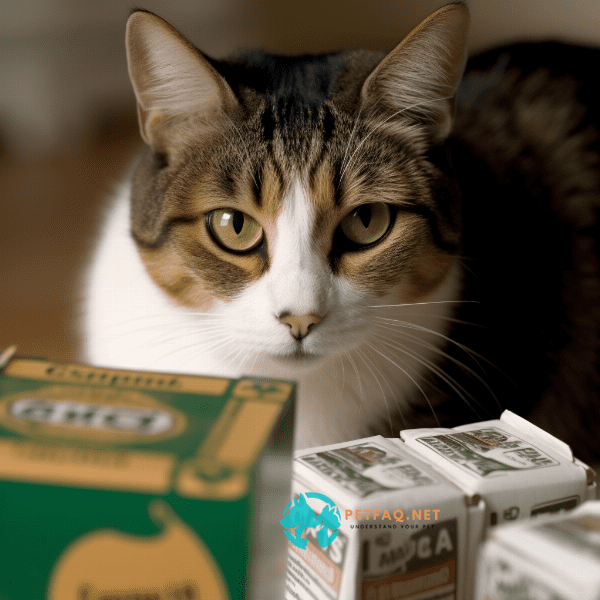
Fun and Creative Ways to Incorporate Catnip into Your Cat’s Playtime
In addition to providing numerous benefits for your cat’s health and wellness, catnip can also be a fun and engaging addition to your cat’s playtime routine. Here are some fun and creative ways to incorporate catnip into your cat’s playtime:
Make Your Own Catnip Toys
One fun and creative way to incorporate catnip into your cat’s playtime is to make your own catnip toys. You can easily make catnip-infused toys using materials such as felt, yarn, and catnip. Not only is this a fun DIY project, but it can also provide your cat with hours of entertainment.
Scatter Catnip on Scratching Posts
If your cat loves to scratch, try scattering some catnip on their scratching post. This can help to stimulate their senses and encourage them to use their scratching post instead of your furniture.
Hide Catnip in Treat Dispensers
Another fun way to incorporate catnip into your cat’s playtime is to hide it in treat dispensers. This can provide a fun and interactive experience for your cat, as they work to uncover the hidden catnip.
Create a Catnip Garden
If you have a green thumb, consider creating a catnip garden for your feline friend. This can provide your cat with a fresh and natural source of catnip and can also be a fun and rewarding gardening project for you.
Use Catnip-Infused Bubble Blowers
Catnip-infused bubble blowers are a fun and creative way to provide your cat with the benefits of catnip. These bubble blowers release bubbles infused with catnip, which can provide your cat with hours of entertainment and stimulation.
In conclusion, there are many fun and creative ways to incorporate catnip into your cat’s playtime routine. By making your own toys, scattering catnip on scratching posts, hiding it in treat dispensers, creating a catnip garden, or using catnip-infused bubble blowers, you can provide your feline friend with all of the benefits that catnip has to offer in a fun and engaging way.
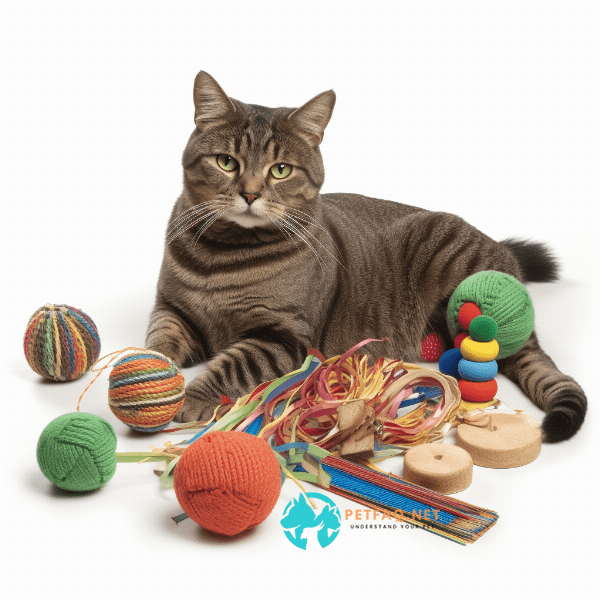
Catnip and Training: Can Catnip Help You Train Your Cat?
Catnip can provide numerous benefits for your cat, including stimulating their senses, reducing stress and anxiety, and providing a source of entertainment. But can catnip also be used as a training tool for your feline friend? Here’s a look at the potential benefits and limitations of using catnip for training your cat.
Benefits of Using Catnip for Training
Catnip can be a useful tool for training your cat in several ways. For example, if you’re trying to train your cat to use a scratching post instead of your furniture, you can use catnip to encourage them to use the post. Similarly, if you’re trying to teach your cat to come when called, you can use catnip as a reward for good behavior.
Catnip can also be a helpful tool for reducing stress and anxiety during training sessions. If your cat is anxious or nervous about learning a new behavior, offering them catnip can help to calm their nerves and make them more receptive to training.
Limitations of Using Catnip for Training
While catnip can be a useful tool for training your cat, it’s important to keep in mind that it is not a magic solution. Catnip should be used in conjunction with positive reinforcement and other training techniques to effectively train your cat.
Additionally, not all cats respond to catnip in the same way, so it may not be a suitable tool for every cat. It’s important to observe your cat’s behavior and reaction to catnip during training sessions to ensure that it is having the desired effect.
Using Catnip Responsibly for Training
If you’re interested in using catnip to train your cat, it’s important to do so responsibly. Use catnip in moderation and in conjunction with positive reinforcement to ensure that your cat is learning the desired behavior in a safe and effective way. If you have any concerns about using catnip for training, consult with a professional trainer or your veterinarian for guidance.
In conclusion, catnip can be a useful tool for training your cat when used responsibly and in conjunction with positive reinforcement. By using catnip to encourage desired behaviors and reduce stress and anxiety during training sessions, you can help your cat learn new behaviors in a safe and effective way.
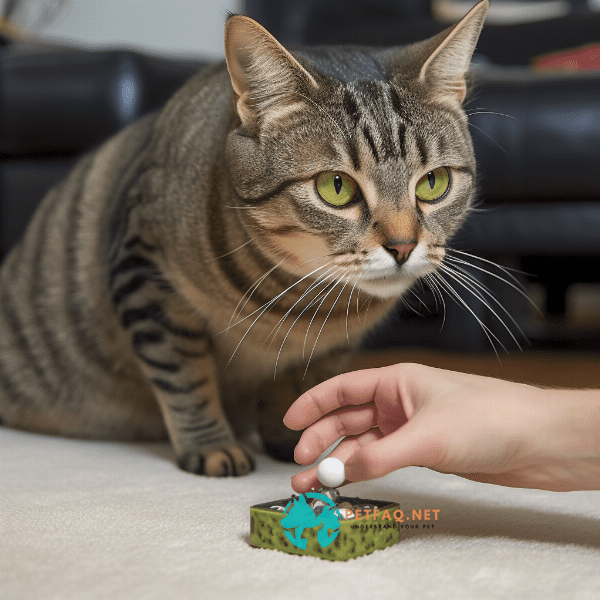
Conclusion: The Benefits of Catnip for Your Cat’s Happiness and Well-being.
In conclusion, catnip can provide numerous benefits for your cat’s happiness and well-being. From stimulating their senses and reducing stress and anxiety to providing a source of entertainment and aiding in training, catnip can be a valuable addition to your cat’s life.
By understanding the different types of catnip available and the best ways to introduce it to your cat, you can help ensure a positive and safe experience for your feline friend. It’s important to use catnip in moderation and to monitor your cat’s reaction to ensure that they are not overstimulated or experiencing any negative side effects.
Remember, catnip is just one tool in your arsenal for providing your cat with a happy and healthy life. By providing your cat with plenty of love, attention, and care, you can help ensure that they thrive both physically and emotionally.
In conclusion, while catnip is not a necessary component of your cat’s life, it can provide numerous benefits for their happiness and well-being when used responsibly. By incorporating catnip into your cat’s playtime routine and training sessions, you can help provide them with a fun and engaging experience that can promote their physical and emotional health.
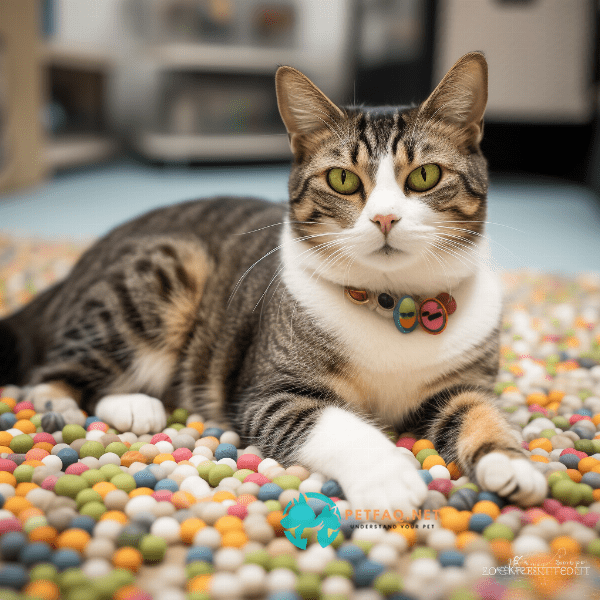
Frequently Asked Questions (FAQs) about catnip benefits:
1. What is catnip, and what are its benefits for cats?2. Are there any potential side effects of using catnip?
3. How does catnip affect cats, and what are the potential health benefits?
4. Relaxation: In some cats, catnip can have a calming effect, causing them to become more relaxed and sedate.
5. Can catnip help with insomnia or sleep issues?


